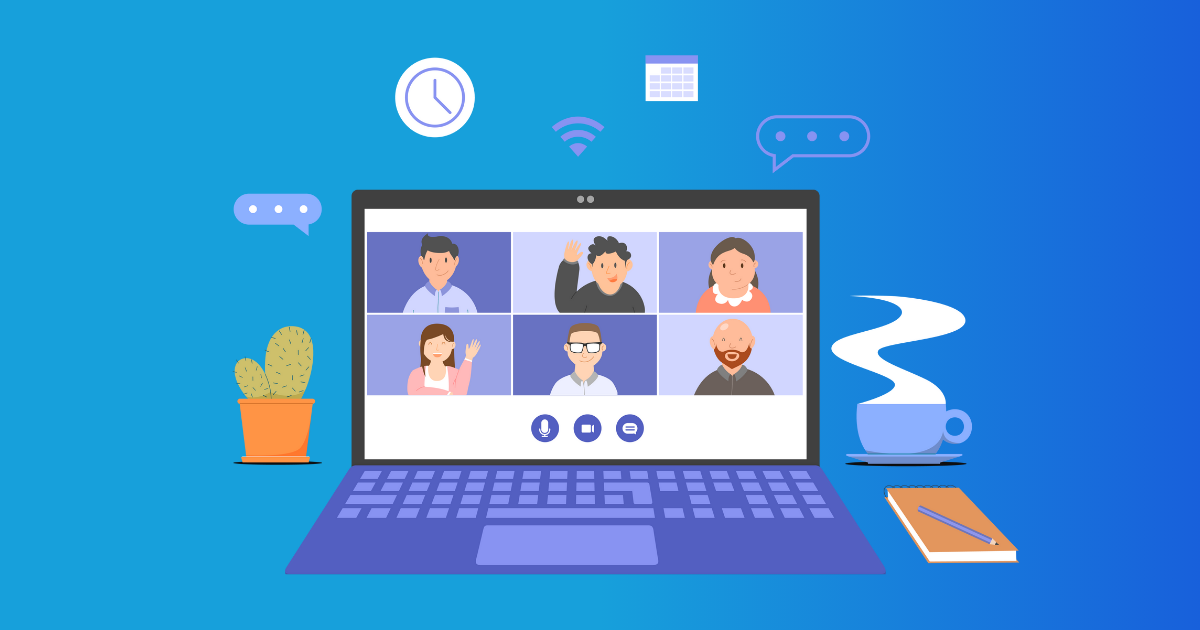Table of Contents
- Understanding Why Audio Is Missing in Jitsi Meet Recordings
- Step-By-Step Fix Guide to Solve Jitsi Meet Audio Missing in Recordings
- Step 1: Verify Jibri Service Is Running and Updated
- Step 2: Check the Jibri Configuration for Correct Audio Device Setup
- Step 3: Review and Adjust Audio Permissions and Drivers on the Jibri Host
- Step 4: Confirm Microphone and Participant Audio Status in Jitsi Meet
- Step 5: Analyze Jibri Log Files for Audio Errors
- Step 6: Use “x11vnc” or VNC to Observe Jibri’s Chrome Session (Advanced)
- Step 7: Clean Cache and Restart All Jitsi and Jibri Services
- Long-tail Keyword Insights Integrated
- Real-World Case Study: Fixing No Audio in a Jitsi Recording for a Client
- Ensuring Trust and Reliability in Your Jitsi Meet Recordings
- Conclusion
Hey there, intrepid Jitsi Meet user! You’re knee-deep in meetings, and just your luck—the video’s great, but where’s the audio? I know, annoying right? Especially when Jibri is the unruly culprit behind this silent drama. But fear not, I’m here to guide you through this maze with some easy-to-follow steps to get those recordings sounding crystal clear once more.
Based on some hands-on tinkering and user tales of woe, this guide offers practical advice and solutions. We’ll dig into why this happens, tackle the common culprits like jibri going mute (talk about hush-hush meetings), and other snafus with mics. Ready for action? Let’s jump in!
Understanding Why Audio Is Missing in Jitsi Meet Recordings
Before we dive into fixes, let’s understand what’s causing your Jitsi recordings to be all video and no sound.
Jitsi Meet uses a nifty component named Jibri to record meetings. It sneaks in using a hidden Chrome browser, records the video and scores the audio for your files. So what goes wrong?
Here are the usual suspects:
-
Jibri’s audio sources misconfigured: If Jibri’s not tuned into the right device, you’re not hearing a peep.
-
Microphone or audio devices off-limits: Permissions or driver challenges on the Jibri host can mute the capture.
-
Muted microphones or participants: If everyone’s whispering sweet nothings to their mics, of course it’s silent.
-
Network or firewall snafus: Connectivity hiccups can really mess with those audio streams.
-
Version hiccups with Jitsi or Jibri: Outdated versions can be a buzzkill for audio.
-
System-level audio gremlins: Missing or misbehaving drivers could be the sneaky culprit.
Knowing these helps you troubleshoot effectively, so you’re not just poking around randomly hoping it resolves itself.
Step-By-Step Fix Guide to Solve Jitsi Meet Audio Missing in Recordings
Here are the steps to wrangle those audio gremlins and get everything nice and audible again.
Step 1: Verify Jibri Service Is Running and Updated
Let’s start with the basics:
-
Log into the server where Jibri’s chilling out.
-
Run
systemctl status jibriand see if it’s up and running. -
Make sure Jibri and Jitsi Meet play nice together version-wise. Updates might solve the mystery.
-
Grab the latest Jibri version (bug fixes galore) at Jibri GitHub Releases.
If Jibri’s taking a nap or crashing, that’s step number one fixed—no recordings if it’s not even up!
Step 2: Check the Jibri Configuration for Correct Audio Device Setup
Jibri is friends with PulseAudio or ALSA to grab audio. Usually, its settings hang out in /etc/jitsi/jibri/config.json.
What to check:
-
Look at
"alsa_device"or"pulse_sink_name"and see if Jibri’s tuned in correctly. -
Run
pactl list short sinks(PulseAudio) orarecord -l(ALSA) to see what audio devices are around. -
Make sure the device in use is actually doing something, not just sitting there quietly.
Example config snippet:
"pulse_sink_name": "alsa_output.pci-0000_00_1b.0.analog-stereo"If Jibri’s tuned into a dead channel, yep, you guessed it—no audio.
Step 3: Review and Adjust Audio Permissions and Drivers on the Jibri Host
On a Linux system running Jibri:
- Give the Jibri user the keys to the audio kingdom. Typically, just add ‘em to the
audiogroup.
sudo usermod -aG audio jibri-
Don’t forget a Jibri restart:
sudo systemctl restart jibri. -
Check ALSA and PulseAudio setups are behaving on the server.
-
Run a test recording, or an audio capture program to make sure drivers are awake and working.
-
If Jibri’s chilling in a Docker container, make sure the audio devices are really usable.
Audio permission or driver issues could easily be the silent show stoppers.
Step 4: Confirm Microphone and Participant Audio Status in Jitsi Meet
The simplest fixes are often the winners:
-
Check everyone’s mic status and unmute if they’re all quiet.
-
Investigate browser mic permissions for each participant.
-
Silent meetings = Silent recordings. Simple as that.
-
Ask folks to verify that yes, their microphone is working and not muted.
-
Even a local call testing can reveal if all systems are go before you hit the record button.
Step 5: Analyze Jibri Log Files for Audio Errors
The logs—sweet, sweet logs—will often show what’s up.
-
Peek into
/var/log/jitsi/jibri.log. -
Warnings or errors pointing to audio issues might jump out. Are we talking PulseAudio connection refusals, missing devices, or permissions blocking sound?
-
Look for
[ERROR]or[WARN]around audio messages for clues.
Example troubleshooting log moment:
Once upon a time, Jibri logs declared “Unable to find audio source.” A few config tweaks to
"pulse_sink_name"later, and boom, problem solved.
Step 6: Use “x11vnc” or VNC to Observe Jibri’s Chrome Session (Advanced)
For the curious detective:
-
Install and fire up
x11vncon Jibri’s server. -
Peek into the VNC session to see what Jibri captures during a meeting.
-
Spot muted tabs, device snafus in the browser, or missing sound. Observations can be revealing.
Step 7: Clean Cache and Restart All Jitsi and Jibri Services
Wrapping it up:
-
Restart all the Jitsi components: Jicofo, Prosody, Videobridge, and Jibri.
-
Clear browser cache or go Incognito to reset mic permissions.
-
Restart PulseAudio on Jibri’s system:
pulseaudio -k && pulseaudio --start. -
Test a new meeting, record, and—hopefully—enjoy the sound of success.
Long-tail Keyword Insights Integrated
-
How to report jibri no audio error in Jitsi recordings.
-
Steps to fix jitsi recording mic snafus on a Linux setup.
-
Troubleshoot the jitsi record silence issue during meetings.
-
Best practices for configuring Jibri audio devices correctly.
-
Validating Jibri and Jitsi recording service permissions.
Real-World Case Study: Fixing No Audio in a Jitsi Recording for a Client
Take this: a small team found their Jitsi recordings going all Marcel Marceau on them—silent.
-
Jibri was lounging on an Ubuntu virtual machine, logging a cheeky error that PulseAudio wasn’t chatting with it.
-
The Jibri user needed permission to hang out with the audio settings.
-
After a gentle nudge (adding the user to the ‘audio’ group) and fixing PulseAudio configs, sounds magically reappeared.
-
Oh, and they gave Jibri a version upgrade. Tossing those little bugs away.
What saved them? A bit of config tweaking and bam, recorded meetings had audio again, sans quality loss.
Ensuring Trust and Reliability in Your Jitsi Meet Recordings
Recording those crucial meetings? Here’s how to make sure they’re reliable:
-
Run pre-flight checks on recordings before big calls.
-
Stick Jibri on trusty servers with stable audio configs.
-
Keep access limited to trusted folks to avoid gaffes or risky edits.
-
Keep Jibri and Jitsi Meet on the cutting edge in terms of updates and security fixes.
-
Regularly peer into those logs to preempt any grumbles from the software.
Keep the sound experience trustworthy and stop doubting whether you missed key details.
Conclusion
So, missing audio in Jitsi Meet recordings can be vexing, but it’s usually a Jibri setup, audio device access, or participant mic glitch. Use these steps to cover service verification, check audio items, tweak permissions, and scrub logs. With some patience, you’ll tackle “jibri no audio” or “jitsi record silence” issues, getting those mic problems under control.
Once your recordings have their voices back, carry on capturing those vital meetings’ details. Embrace this guide—your clear, audio-rich Jitsi Meet archive awaits!
Ready to reclaim audio clarity in your Jitsi recordings? Dive into these fixes and build a clear, trustworthy meeting archive. Need a hand? Just drop your setup details, and I’m all in to help out.
Happy recording!
About the Author:
Avkash Kakdiya is a software engineer and an enthusiast of all things open-source, focusing on real-time communication like Jitsi Meet. With years of experience battling streaming and recording issues, Avkash writes guides to help everyone—from rookies to seasoned pros—navigate these tech waters with ease.
References:
FAQ
Audio missing in Jitsi Meet recordings is usually caused by misconfigurations or issues in the Jibri recording service, permissions, or incorrect audio device selections.
You can fix ‘jibri no audio’ by verifying Jibri’s audio configuration, ensuring the right audio devices are selected, checking user permissions, and reviewing relevant log files.
Jitsi records silence when the microphone is muted, the recording service experiences errors, or audio streams fail due to network or configuration problems.
To fix mic issues, check the browser's microphone permissions, validate Jibri’s audio setup, update drivers if needed, and confirm the meeting participants’ audio is not muted.
Yes, beginners often face audio missing issues due to the complexity of setting up Jibri properly, but following a detailed fix guide simplifies troubleshooting.


